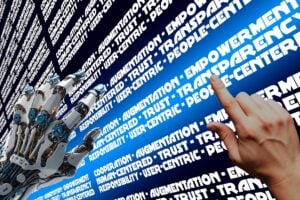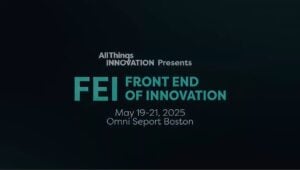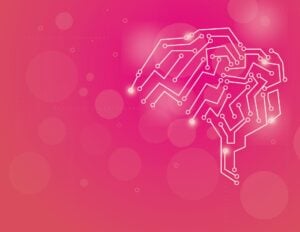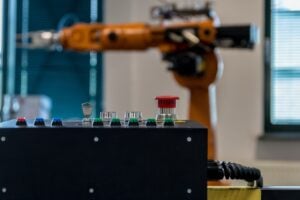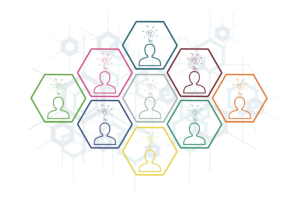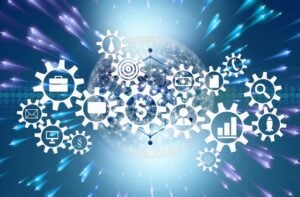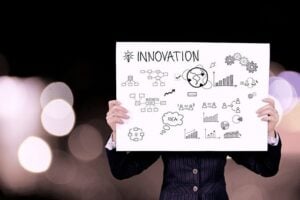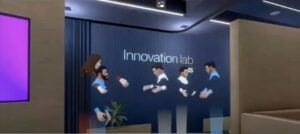You both are speaking together at FEI 2024, and we are so thrilled. In part, interdisciplinary interactivity is a key theme at this year’s show, and you’re going to be talking about it. How are you working together to drive innovation forward?
Helmer says, “Well, first off, let me tell you a little bit about Clorox. We have a vision to be exceptional innovators who win people’s enduring loyalty, and we’ve transformed our company along three different principles of being faster and leveraging AI. And we created a digital core that helps support the interdisciplinary activity.”
“What I would add to that is this idea of interdisciplinary innovation is not new,” notes Sobol. “That’s probably the only way to do innovation. You need brands. You need R&D. You need insights. You need the supply chain, finance, the list goes on. What is new is that we are now adopting systems thinking and systems design at corporations such that we design a process and a toolkit where a variety of people can come in and collaborate in a team fashion. So you’re no longer dependent on a pre-structured team with predefined roles, but the system enables people with varied backgrounds to come together and collaborate on a project with a consistent result.”
System syncing is not only featured in this session. Christian Saclier from PepsiCo will also be touching on that. What I love about the session is the fact that you call out the fact that you’re putting together humans and AI at the center of what you’re doing. Can you expand on that?
“I would qualify that as we are putting humans at the center,” says Sobol. “We are a consumer-centered company. AI is a tool. It is an enabler. But here’s how it unlocks new things for us. I work in insights, and in a given year, we are speaking with hundreds of thousands of consumers via surveys directly, face to face, by our consumers affairs group. That seems like a lot, but that pales in comparison to the hundreds of millions of conversations that are available in the digital space. This is where AI comes in and casts a vastly broader net faster, more efficiently, so that enables us to listen to a much greater array of more diverse voices.”
Helmer adds, “And I’ll bring it back to the innovation process. So let me take you back in time. We used to go into eight consumers’ homes and watch them and build all of our plans on that. Now I have millions of data points that we could bring together because they’re expressing themselves online, and they’re searching for things, and they’re reviewing products. And I’d rather have the million data points as my foundation than eight.”
What are the actual key takeaways that attendees should kind of expect from this session?
“If you aren’t using AI in your innovation process, you should be. And I want you to leave and immediately start doing that,” says Helmer.
Sobol relates, “I hope people walk away with an updated mindset about what it means to collaborate in innovation going right back to your first question, Seth. So with the tools that are available now, we no longer have to hold this for a highly specialized small group of people within the company. At Clorox, we are opening up this collaboration to a much broader network of people because the tools enable that now. And what that gives you is more ideas, more diverse perspectives, more build. We are democratizing innovation, you could say, and look forward to seeing everyone in our session.”
Attend FEI 2024
Looking forward to FEI 2024? The conference, which will be held June 10 to 12, will feature “Implementing An AI-Driven Innovation Discovery Process,” presented by Miranda Helmer, VP, Innovation Discovery, The Clorox Co., and Oksana Sobol, Senior Director, Insights Lead, The Clorox Co. No matter how it’s informed, the traditional innovation discovery process is simultaneously messy and beautiful. The messiness is provided by humans knocking their heads together to generate ideas that provide the groundwork for the growth and resilience of an organization. What’s beautiful is when that “fuzzy front-end of innovation,” works. But it works slowly. At this moment, the innovation discovery process simply needs to be AI-driven. Dive into this session and experience what’s already working, at the modern pace of business. Register for FEI 2024 here.
More Innovation Resources
The advancements in artificial intelligence have rapidly impacted and transformed the business world around us. For insights and innovation, it has increased the reliability and accessibility of data-driven functions, as well as augmented the automation of some tasks. Automating processes, developing new products and services, increasing business and competitive intelligence are all benefits of AI. But let’s take a closer look at implementing an AI-driven innovation discovery process and the advantages of adopting that approach.
The Impact of AI on Innovation
Artificial Intelligence (AI) is having a profound impact and influence on a broad range of industries. From healthcare to publishing to industrial fields and manufacturing, the effects of AI on systems and the workforce are just starting. Already there has been cause for celebration of automating some tasks, to consternation over what could be perceived as the negative effects of AI on a given field. Just where does one draw the line on the advantages versus the drawbacks? The technological developments of AI, and the rapid speed of adoption, are generating plenty of questions in the market. Just what are some of the pitfalls and potential of AI when it comes to innovation?
Contributors
-
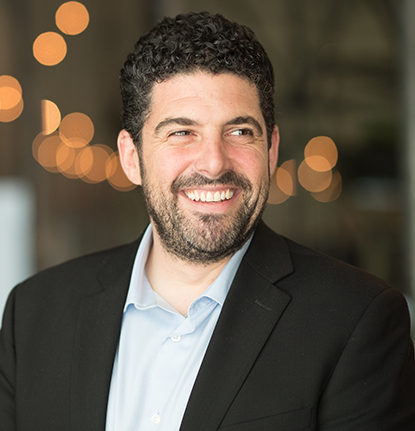
Seth Adler heads up All Things Insights & All Things Innovation. He has spent his career bringing people together around content. He has a dynamic background producing events, podcasts, video, and the written word.
View all posts -

Matthew Kramer is the Digital Editor for All Things Insights & All Things Innovation. He has over 20 years of experience working in publishing and media companies, on a variety of business-to-business publications, websites and trade shows.
View all posts






